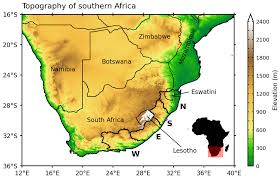Introduction
La Niña, a complex weather phenomenon characterized by cooler ocean temperatures in the Pacific, plays a significant role in influencing global weather patterns. Its effects are particularly noticeable in South Africa, a nation already grappling with climate variability. Understanding La Niña is crucial as it can lead to both excessive rainfall and drought conditions, profoundly affecting agriculture, water resources, and local economies.
The Effects of La Niña in South Africa
Recent forecasts from the South African Weather Service (SAWS) indicate that the current La Niña event may continue through early 2024. Typically, La Niña brings above-average rainfall to eastern and northeastern regions, including KwaZulu-Natal and parts of Mpumalanga. During such events, farmers in these areas may benefit from enhanced crop yields due to improved growing conditions.
However, the consequences are not universally positive. While some regions experience increased precipitation, others may face drier conditions, leading to water shortages and agricultural challenges, particularly in the Western Cape, which is susceptible to prolonged droughts. This uneven weather pattern can affect food supply chains, and pricing, and raise concerns over water security, especially as South Africa has been facing several intense drought years in the past decade.
Current Events and Response
As of November 2023, farmers across South Africa are gearing up for the planting season, closely monitoring weather predictions and seeking government support to prepare for any possible agricultural disturbances caused by La Niña. Local agricultural bodies have advised farmers to diversify their crops to mitigate risks associated with potential flooding or drought scenarios.
In urban areas, municipal governments are also taking proactive measures to manage water resources effectively. Many municipalities are launching awareness campaigns aimed at educating residents about water conservation to prepare for the possibility of water restrictions if dry conditions persist.
Conclusion
The phenomenon of La Niña holds significant implications for the socio-economic fabric of South Africa. As changes in weather patterns continue to pose challenges, it is essential for policymakers, farmers, and local communities to work together to implement sustainable agricultural practices and effective water management strategies. By doing so, they can mitigate the adverse effects of climate variability and prepare for the future, ensuring food security and economic stability within the region.


